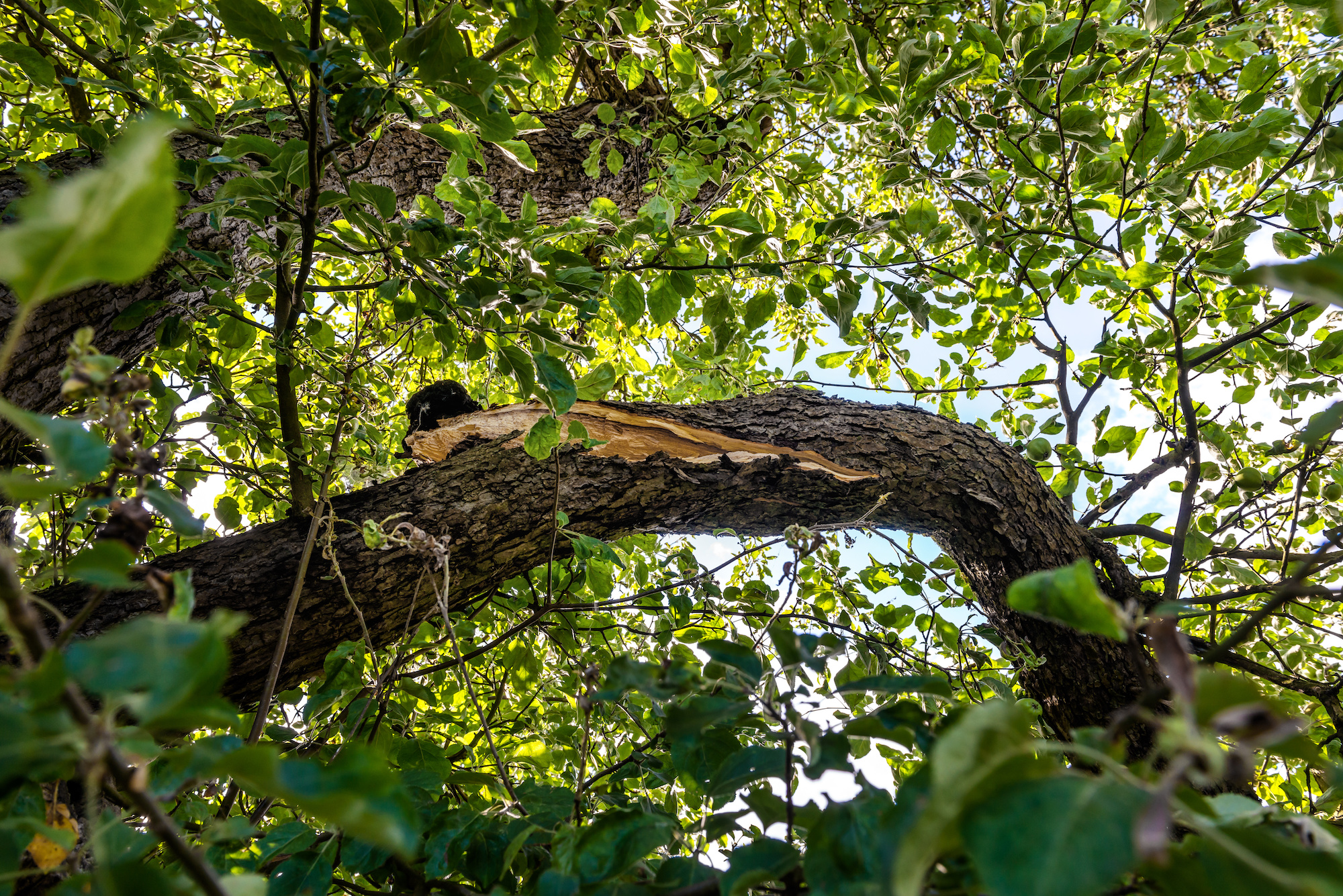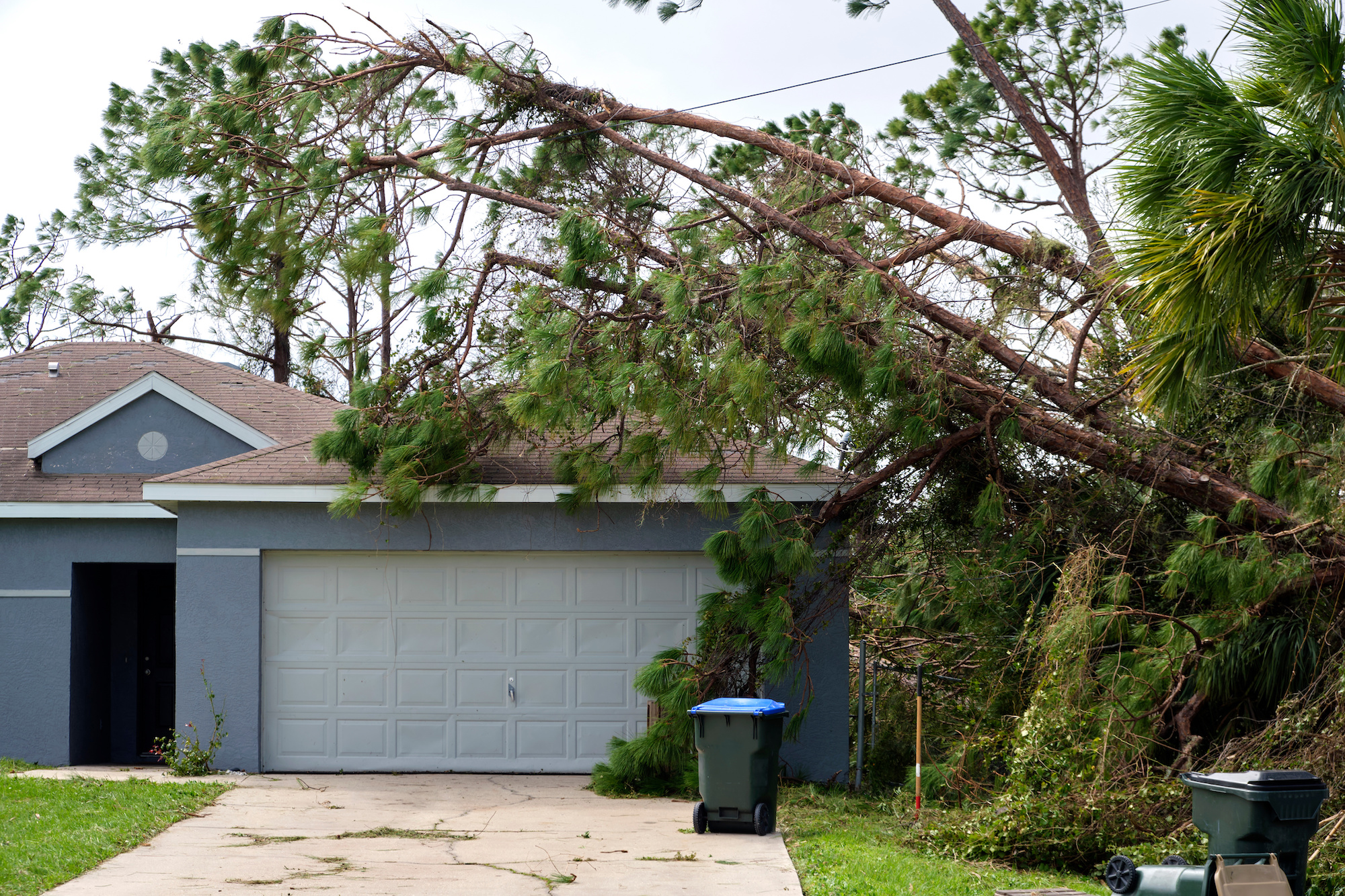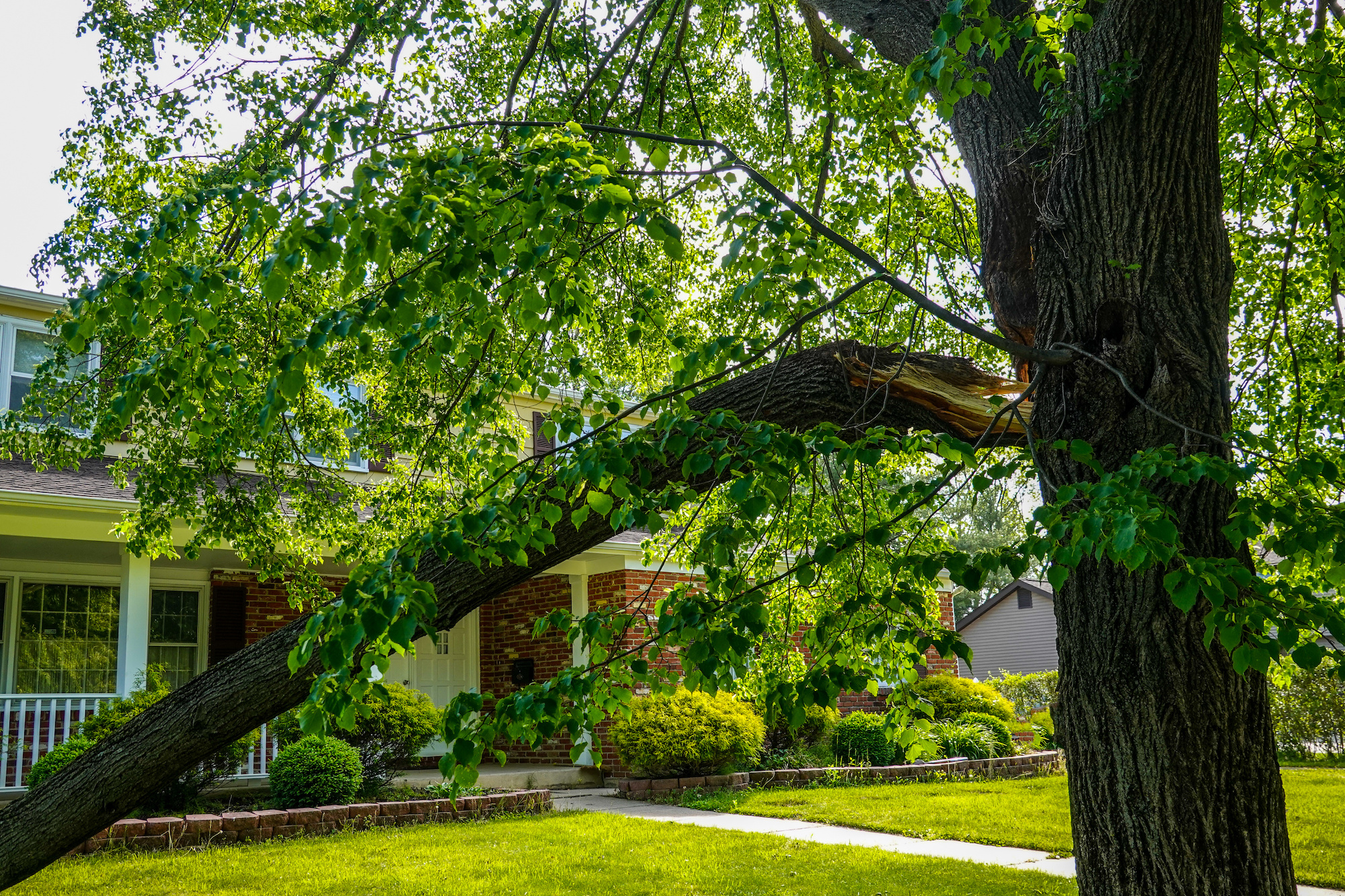
The safety of your property involves many aspects, one of which is hazardous tree inspection. This process can help you identify potential risks posed by trees that may be in poor health or structurally unsound.
Hazardous tree inspections are not just about aesthetics; they’re a crucial part of maintaining a safe environment. These inspections can reveal signs of disease, decay, or structural weakness that might otherwise go unnoticed until it’s too late.
The goal with these inspections is to prevent damage and injury before they occur. By identifying and addressing issues early on through hazardous tree inspection, you can potentially save yourself significant time and money in repairs.
In this guide, we’ll delve deeper into what hazardous tree inspection entails and how it plays an essential role in overall property maintenance. Let’s explore together!
Call 929-841-1776

The Importance of Hazardous Tree Inspection
Performing a hazardous tree inspection is essential to ensure the safety and health of our environment. This practice involves evaluating trees for potential risks and requires knowledge, judgment, practicality, and experience.
Hazardous trees can pose significant dangers to individuals and property. The risk of a falling tree damaging structures or broken branches causing harm is a real threat that must be addressed through thorough hazard tree inspections.
Neglecting regular inspections or maintenance that leads to harm caused by a failing tree can result in legal repercussions for the owner.
Distinguishing Nearby Trees as Potential Hazards
An essential part of any hazardous tree inspection is identifying nearby trees that may pose potential hazards. Abnormal growth patterns or signs of disease, can effectively differentiate these cases during inspections.
This process helps focus resources on inspecting truly problematic large trees while avoiding unnecessary time spent on healthy ones. It is essential not only for protecting people and property, but also to minimize any potential destruction. When professional assistance is needed, companies like BX Tree Service specialize in services such as rapid removal and trimming procedures carried out by experienced arborists who can handle hazardous situations safely without further aggravating existing issues.
Understanding the Basics of Hazardous Tree Inspection
Hazard tree inspection is an essential aspect of arboriculture, one that we carry out with precision and safety. The initial stage in this process involves crucial decisions such as determining target distance – how far potential damage could extend if a tree were to fall.
The task also requires deciding on a minimum diameter at breast height (DBH) for trees under scrutiny. This decision influences your hazard rating levels and helps distinguish nearby trees that pose threats from those which are safe.
Deciding on Minimum Tree Size
Selecting the smallest size for inspectable trees plays a significant role in hazardous tree inspections because smaller specimens usually present less risk than their larger counterparts due to their limited capacity to cause harm upon falling or shedding broken branches.
In densely populated urban areas where people frequently pass near variously sized vegetation, setting too high a threshold might overlook potentially dangerous situations caused by small but still substantial individuals. Therefore, understanding what constitutes ‘minimum’ within your specific context aids more accurate hazard ratings while ensuring minimal potential damage should failure occur.
Prioritizing each step before starting inspections includes accurately mapping each specimen’s location so marked ones can be easily located again when treatment time arrives either immediately following assessment or weeks later depending on the priority level assigned during the evaluation process conducted by professionals like BX Tree Service who specialize in services including rapid inspection and trimming large trees safely while minimizing potential damages.
Identifying Warning Signs in Trees
In the realm of tree care, recognizing warning signs is crucial. These signs can range from noticeable physical changes to unusual growth patterns.
Recognizing Decay in Trees
Detecting decay within a tree requires careful observation and the use of appropriate tools. One common sign of internal decay is the presence of fungi, often found on or near compromised areas, indicating deteriorating health.
In addition to visual cues, specialized instruments can assist inspectors in identifying potential hazards in trees. For example, cordless drills allow for easy penetration into trees without causing extensive damage, which is important when distinguishing nearby hazardous trees.
Sonic tomography machines, along with impulse tomography devices, provide further insight by measuring sound waves as they pass through a tree’s structure. Variations in the sound waves can indicate areas where wood density has been altered due to rot or other forms of degradation, providing essential data for assessing internal decay.
Other visible indicators of potential hazards include leaning trunks or unbalanced canopies, which may suggest structural instability. Cracks or decaying spots on the trunk also signal possible hidden issues that can pose serious threats over time if left unchecked.
The presence of buckling soil around the base of a tree could indicate root problems, while multiple trunks might suggest unstable foundations caused by previous injuries or improper early development habits.
All of these warning signs should prompt additional investigation and, if necessary, intervention measures such as pruning broken branches before they unexpectedly fall and cause injury or property damage. These situations are best handled by professionals like us who specialize in services including the trimming of large hazardous trees to ensure minimal potential damage.
Key Takeaway:
Spotting hazardous trees involves keen observation for warning signs like unusual growth patterns, fungi presence indicating decay, and structural instability. Specialized tools can help detect internal issues. If these red flags are present, seek professional intervention to prevent potential damage.
Advanced Techniques for Assessing Internal Decay
When dealing with mature trees, internal decay is a hidden danger that can compromise the tree’s structural integrity. This makes it vital to have advanced techniques in place for assessing this often invisible threat.
Sounding and increment boring are two such sophisticated methods used by professionals. Sounding involves striking different parts of the trunk and listening carefully to any changes in resonance, which could indicate hollow or decaying areas within.
Using Resistograph for Internal Inspection
A resistograph is another specialized tool utilized during these inspections. It provides rapid inspection capabilities without inflicting damage on large trees, making it an essential forestry instrument costing $190 but invaluable when measuring internal decay.
The way a resistograph works is fascinating – as it drills into wood tissue, any resistance encountered gets measured accurately. Changes in this resistance help distinguish healthy sections from those affected by rot or other forms of degradation inside large trees.
This crucial information helps inspectors make informed decisions about potential treatments needed or whether removal might be necessary due to safety concerns arising from falling tree knocking risks associated with severe decayed conditions.
In essence, tools like resistographs enable us not only to routinely detect decay but also to prevent possible injuries and damages caused by hazardous trees while ensuring preservation efforts remain focused on robust specimens worth saving wherever feasible.

Developing Your Skills as a Hazardous Tree Inspector
The path to becoming an adept hazardous tree inspector is paved with continuous learning and hands-on experience. As you handle more cases, each presenting unique challenges, your skillset expands.
Threshold Hazard Rating Levels
A crucial part of this profession lies in understanding threshold hazard rating levels. These are set criteria used for assessing the potential risk trees pose. The higher these ratings climb, the greater the chances of failure leading to injury or damage.
Mastery over these ratings enables inspectors to make informed decisions about whether a tree should be removed or can be salvaged through interventions like pruning or cabling.
Cultivating Practical Skills Through Experience
Beyond theoretical knowledge lie practical skills gained from field exposure that play an instrumental role in shaping proficient hazard tree inspection abilities. With every case handled comes increased aptitude at rapidly distinguishing nearby potentially dangerous large trees accurately using tools such as resistographs for internal inspections without harming them.
When To Call Professionals From Affordable Tree Service Bronx
Hazardous trees can pose a significant risk to property and safety. Identifying such threats often requires the trained eye of professionals like Affordable Tree Service Bronx. Specializing in tree removal, trimming services, and hazard rating level assessments, our team is equipped with both knowledge and experience.
Detecting signs of potential danger, such as leaning trunks or unbalanced canopies, necessitates immediate professional attention. Similarly, decayed areas on the trunk or multiple trunks indicate an urgent need for intervention by experts.
Our expertise extends beyond mere visual inspection; we have access to advanced tools designed for internal inspections of large trees that help accurately distinguish nearby hazards. Such instruments allow these arborists not only to easily drill into potentially hazardous trees but also to measure any internal decay present without causing further damage.
Our experienced crew learns from every case handled – each unique situation serving as another opportunity for growth as inspectors skilled at assessing potential damage caused by falling tree knocking incidents.
Apart from this technical prowess and learning agility, understanding threshold hazard rating levels forms an integral part of their service offering. This helps determine when it’s time to call upon professionals who are adept at minimizing potential damages while ensuring safe handling during operations involving risky situations presented by hazardous trees.
FAQs in Relation to Hazardous Tree Inspection
What is a hazard tree assessment?
A hazard tree assessment involves evaluating trees for potential risks they pose to people or property due to structural defects, diseases, or other factors.
How do you identify hazardous defects in trees?
Hazardous defects are identified by inspecting signs like leaning trunks, unbalanced canopies, cracks in the trunk, soil buckling at the base, and fungi growth.
What is the definition of a hazardous tree?
A hazardous tree refers to any tree with structural defects that could cause it to fail and potentially harm people or damage property.
What is involved in a tree assessment?
A comprehensive inspection involving visual checks for warning signs of danger and advanced techniques such as sounding and increment boring for internal decay detection forms part of a thorough tree assessment.
Conclusion
Hazardous tree inspection is more than just a cursory glance at your backyard. It’s an art and science combined.
From understanding the basics to identifying warning signs, it requires keen observation and in-depth knowledge.
The use of advanced techniques like sounding, increment boring, or resistograph further enhances the accuracy of these inspections.
But remember, every tree is unique. And so are its potential hazards.
This process isn’t about creating fear but fostering safety – for you and everyone around you.
If things seem overwhelming or if there’s even a hint of doubt – call in the professionals. We are equipped with experience and expertise to handle such situations efficiently in the Bronx and Manhattan.
Call 929-841-1776

